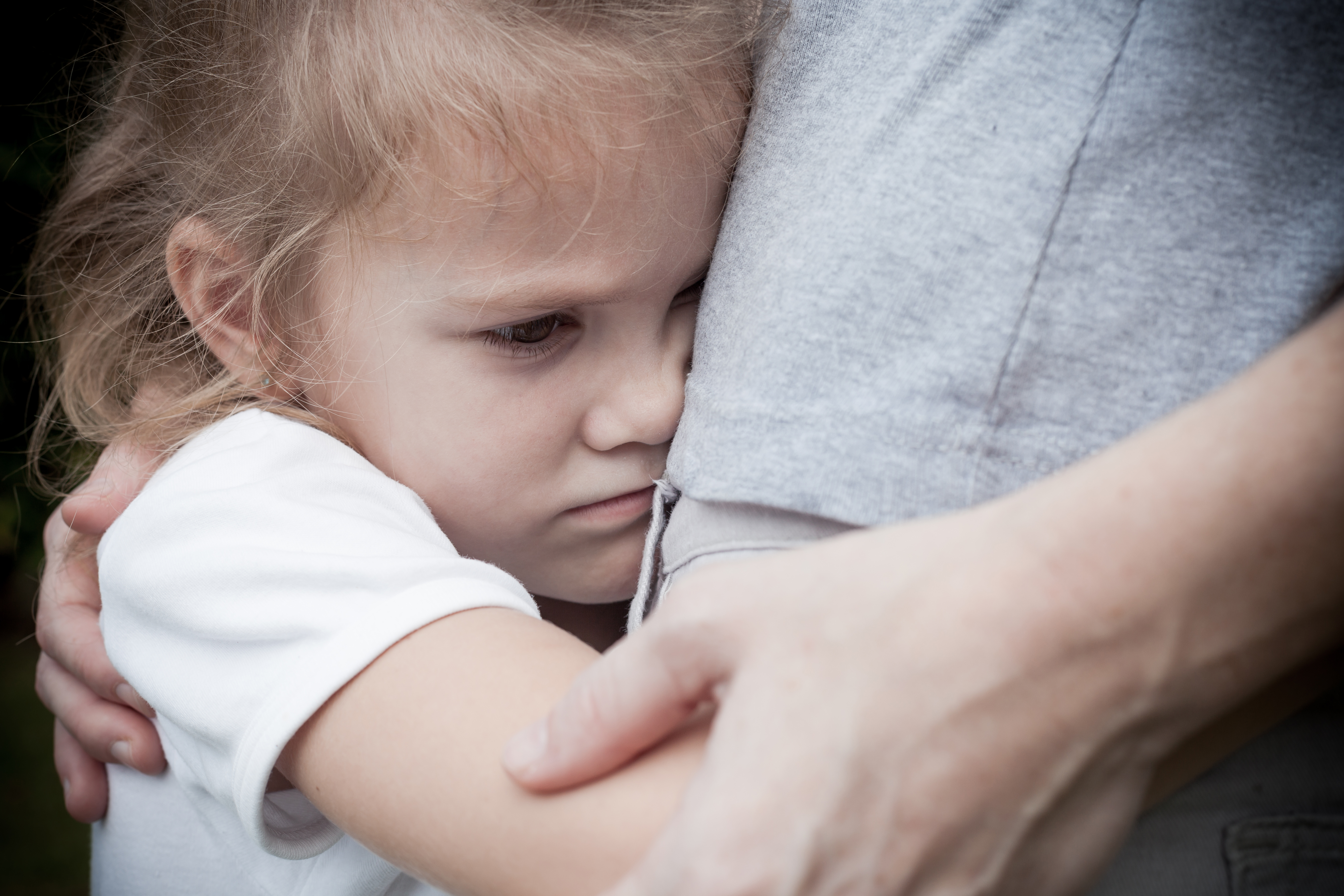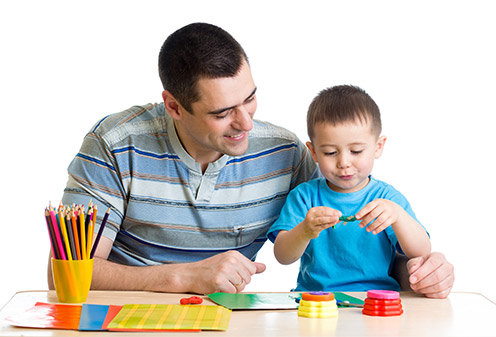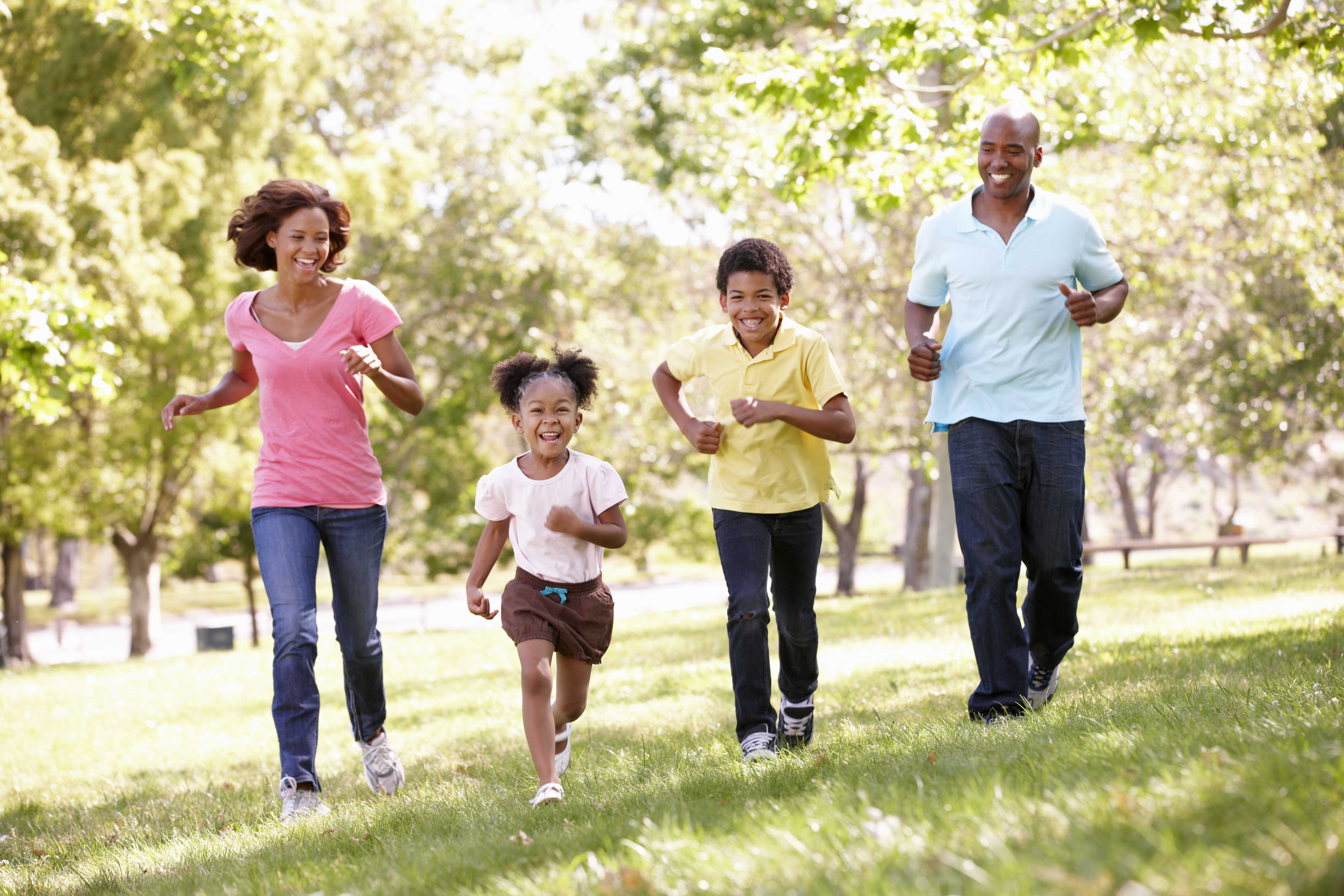
G2261
June 2015
How to Help Preschoolers Manage Their Emotions after a Disaster
Aileen S. Garcia, Extension Research Graduate Assistant
STonia R. Durden, Early Childhood Extension Specialist
Car Mun Kok, Extension Research Graduate Assistant
Preschoolers have a limited understanding of disasters such as a tornadoes, floods, and fires. This publication provides information about ways parents can help preschoolers cope with tragedy and stress.
When a disaster occurs, whether natural or man-made, it affects everyone. At one point or another, most people have been affected, or know someone who has been affected, by a massive tornado, fire, drought, car accident, shootout, terrorist attack, or another calamity. Some of a tragedy’s obvious effects include fatalities, damage to properties, and suspension of people’s regular routines. All these can lead to a great deal of stress.
Adults try to make sense of what happened and do everything in their capacity to bring their lives back to normal. This is particularly true for parents caring for young children. At the same time that parents are having a challenging time comprehending the unfortunate circumstances themselves, they also need to assist their preschoolers, who may have an even more difficult time coping with tragedy and stress. Learning about ways to help preschoolers understand and cope with their emotions can help adults and children alike adjust better during and after a stressful event.

It is normal to feel intense and negative emotions such as grief, anger, and fear after a disaster. People lose their sense of security and question why it had to happen, why they are the ones who have been affected by it — and they fear that it may happen again anytime. Because adults may not be used to having these emotions, they may sometimes find it difficult to express them. However, children can find it even more difficult to express what they are feeling. Children age 5 and younger may not have the vocabulary for these emotions yet. They are still in the process of acquiring language, and the words they need to express themselves may not readily be available.
It is very important to remember that while children may not verbally express feelings of fear or worry like adults do, they still feel these emotions. They may just express them in different ways, such as persistent crying, loss of appetite, tantrums, refusal to engage in activities they used to like, or being unusually quiet. It is also possible that children may feel scared and nervous but think that it is wrong to express these emotions, so they keep their worries and fears to themselves.
This is where adults can step in and help. As is true for adults, it is helpful if children are able to express their feelings in appropriate and effective ways. If not, it will be harder for them to feel better over time. These uncomfortable feelings may also manifest themselves in less desirable ways, such as getting sick, not participating in activities while in child care, or fighting with playmates. Parents and teachers can help children manage their emotions by doing the following.
Recognizing, Respecting, and
Validating Children’s Feelings
- It is helpful if adults recognize that the children may not feel ok and affirm that what they feel is normal. Simply dismissing the signs or the feeling of sadness is not going to help children cope with the tragedy. Feelings are neither wrong nor right so adults should not criticize children for feeling sad. It is important for adults to be sensitive, nonjudgmental, and responsive; otherwise, children will be reluctant to express those feelings again.
- Children look to adults for guidance in modeling a positive expression of fear or sadness. For example, a parent may say the following to his 3-year-old when he observes her crying a few days after their home was destroyed by a fire: “I noticed that you’ve been crying a lot lately. You are feeling sad because of what happened. That’s ok. What you’re feeling is normal — I, too, feel sad sometimes.” It is also likely that children may not even know what they are feeling so adults could ask them about their emotions and then help them to label their feelings: “Are you mad that your swing set was destroyed by the tornado? Are you feeling scared that a tornado will come again? Do you want to talk about it?”
Empathizing and Helping Children
Cope with Their Emotions
-
After successfully identifying what children are feeling, the next step is to help them regulate this emotion. When speaking to children, parents and teachers should make sure that they show empathy and that the child knows that they are there to help.
-
Adults also could suggest ways to help children feel better: “If you’re feeling sad, please feel free to let me know so I can help you. If you like, we can go to your friend’s house and you can play there and feel better. We can read your favorite book together if you like.”
Responding to Children’s Questions
Truthfully and Appropriately
The following tips are especially helpful if children willingly speak and share their feelings. Young preschoolers may not be able to articulate their feelings or they could simply refuse to talk, depending on their temperament. Even then, adults can still help children manage their emotions.
- Children may have a lot of questions about the disaster. However, many adults ban all painful topics from family conversations, and this could intensify children’s fears. On the other hand, adults may be willing to talk about disasters, but if caught unprepared they may unwittingly make children feel worse with what they say.

-
When adults respond appropriately to children’s concerns and questions, it can soothe their anxieties. They should make sure to explain the events and their answers in words children understand. Generally, in answering children’s questions, it is important to be honest, even if the answer is painful. Preschoolers may be young but they are capable thinkers and learners, so avoid giving unrealistic and fictional answers like “Don’t be afraid, Superman will come to the rescue.”
-
Adults should not be afraid to admit to children that they do not know all the answers to their questions. They can tell childen that they will try to find out the answers from other adults. However, do not press unsettling information if the children do not ask for it again.
-
Although it is good that preschoolers know what is going on around them, letting children watch explicit images on television at a young age may only contribute to nightmares and further anxiety. This also could negatively impact their ability to recover from the tragedy.
-
If needed, adults also should encourage children to ask questions. Sometimes, children’s imaginations are more frightening than reality. Encourage them to speak up and ask questions so that adults can help clarify their thoughts.
-
Keenly and carefully observe children’s nonverbal as well as verbal language because it may reveal what they are actually feeling. An adult’s observations can serve as a conversation starter with childen, and that could encourage them to open up and talk about their feelings.
-
Make sure to provide a safe, calm, and warm environment where children feel safe to express their emotions. Also, receiving physical reassurance like hugs could help them feel secure and comforted, which could lead them to feel that they can trust the environment and express their feelings honestly. Be ready to consistently provide reassurance and comfort to children to ease their anxieties.
-
Adults also can share their own feelings and fears with children. Children who hear that the adults feel the way they do can help them realize even more that their feelings are normal. However, make sure not to over share details or say things children did not ask for. Information that may further scare children is better left unsaid (e.g., the city lost more than 100 people in this tornado, or all of the Wilson’s cattle died during the flood).
-
Adults can be good models of emotional regulation for children. Adults should stay calm and try their best to manage their own stresses and concerns. Children take their cues on how to deal with stressful situations from adults. If children see that the adults are constantly anxious and weary, they may think that they should also feel that way. Adults who show and tell children that they also are trying to cope with what happened and that so far they’ve been coping well tells the children that they, too, can cope.
-
Encourage and let children play. Play is considered to be one of children’s languages and is one way preschoolers can express and release their feelings. How children play could reveal their emotions as they project their own feelings to their toys. Parents and teachers can play with children or unobtrusively observe from a short distance to check if their playing reveals any indication of their feelings. Adult observations from the play could then be used as a possible springboard for conversation with the children, hopefully leading to the children expressing any negative feelings. Because playing comes very naturally to children, it can also serve as an effective distraction. Instead of worrying and feeling sad, children can divert their energy and attention to playing.
-
If children enjoy creative arts, adults can help them express themselves through drawing, coloring, writing, molding clay, and using other art materials. Like play, children may express their inner world in this medium. Note that some children could feel more comfortable and expressive when they are independently working. When children are ready to share their feelings, adults should be readily available and responsive to them.
-
Adults should do their best to go back to the family’s or school’s regular routines. If this is not possible, establish new ones. Having a regular schedule or routine can help children feel more secure and more in control, and this helps them recover. Routines can focus on simple things such as sleeping times, eating times, and school, work, or playtime. Though there are many things people cannot control or foresee, knowing what regularly happens in a day gives children a sense of security and normalcy.
-
Adults should involve preschoolers in the family’s or school’s efforts to recover from or prepare for a disaster. They should remember to assign safe and age-appropriate tasks that the children could both learn from and enjoy. Adults should also let children know that they appreciate their efforts to help. Pulling together through a difficult time will strengthen the family, the school, and the community in ways that will last long after the crisis is resolved.
Summary
Adults should remember that preschoolers have limited understanding of disasters, and this may lead them to experience difficulty managing and expressing their negative emotions. During a stressful time, children need adults’ extended patience and understanding more than ever.
Adults can use different strategies to help children cope and feel better post-disaster. Children heavily rely on the caring adults around them to better comprehend the situation. To cope with and regulate their emotions, children need all the assurance and security adults can provide. If children show symptoms that are severe and long lasting, adults should not be afraid to seek professional advice and should contact a physician or mental health agency.




Here are additional resources that provide information on helping children of different ages cope after a disaster:
Nebraska Extension, University of Nebraska–Lincoln Help your Preschooler Deal with Family Stress and Drought:
http://droughtresources.unl.edu/Preschoolerstress
The National Child Traumatic Stress Network
http://www.nctsnet.org/trauma-types/natural-disasters
National Association for the Education of Young Children
https://www.naeyc.org/newsroom/Resources_on_coping_with_disasters
Federal Emergency Management Agency
https://www.fema.gov/coping-disaster
Ready
http://www.ready.gov/kids/parents/coping
Books are also a great way to help children recognize, label, and identify their emotions and the feelings of others. The fol- lowing are three great books adults can use with preschoolers to introduce various emotions and feelings or help children connect with characters who have also faced natural disasters:
- Glad Monster Sad Monster by Emberley & Anne Miranda
- Clifford and the Big Storm by Norman Bridwell
- When Fuzzy Was Afraid of Big and Loud Things by Inger M. Maier
-
Visit child.unl.edu for additional resources and informa- tion on a range of other child development topics.
Note: This NebGuide was written with the assumption that the adults who will be helping children cope with a di- saster have already recovered or have initially found help for themselves. The strategies mentioned in this publication are not meant to address problems that happen during or right after a disaster (e.g., lack of shelter, food, etc.). Rather, these tips are most helpful when the child is in the recovery phase
or when there is only a mild to moderate level of disruption in the daily lives of the family and/or the community.
Acknowledgments
The content of this NebGuide is based on “Effective Parenting in Emergency Situations.” This manual was authored by Liane Peña Alampay, Mary Angeline Daganzo, Aileen Garcia, and Irene Padasas in 2014 for Save the Children International in the Philippines and the PsychologicalAssociation of the Philippines.
Resources
Alampay, L.P., Daganzo, M.A., Garcia, A., & Padasas, I. (2014).
Effective Parenting in Emergency Situations. Save the Children International in the Philippines, Psychological Association of the Philippines.
Boyse, K. & Sandberg, D. (2011). Helping Children Cope with Disasters and Traumatic Events. Retrieved from http://www. med.umich.edu/yourchild/topics/disaster.htm
Cobham, B., McDermott, B., & Sanders, M. (2011). Approaching bad weather: Helping children feel prepared rather than scared. Retrieved from https://exp.psy.uq.edu.au/prepqld/tip_sheet.pdf
Copeland, A. (1998). The Use of Reframing with Children and Adolescents. Retrieved from http://faculty.education.ufl.edu/ Myrick/CMethods/Reframe.html
Gottman, J. (1997) Raising an emotionally intelligent child; The heart of parenting. New York: Simon and Schuster Paperbacks.
Joshi, P., Lewin, S., & O’Donnell, D. (2005). The Handbook of Frequently Asked Questions Following Traumatic Events: Violence, Disasters, or Terrorism. Retrieved from http:// childrensnational.org/~/media/cnhs-site/files/resources/ ichoc/handbook.ashx?la=en
Koplewicz, H.S., Cloitre, M., McClough, J., Gurian, A., Kamboukos, D., Levine, E., Pearlman, M., & Wasser, R. (2006). Caring for kids after trauma, disaster and death: A guide for parents and professionals, 2nd ed. New York University Child Study Center. Retrieved from http://www. aboutourkids.org/files/articles/crisis_guide02.pdf
National Institute of Mental Health. (2006). Helping Children and Adolescents Cope with Violence and Disasters: What Parents Can Do. Retrieved from http://www.nimh.nih.gov/health/ publications/helping-children-and-adolescents-cope-with- violence-and-disasters-parents/index.shtml
Vassilopoulos, S.P., Brouzos, A., Damer, D.E., Mellou, A., & Mitropoulou, A. (2013). A Psychoeducational School- Based Group Intervention for Socially Anxious Children, Journal for Specialists in GroupWork, 38(4), 307-329, doi: 10.1080/01933922.2013.819953
This publication has been peer reviewed.
UNL Extension publications are available online at http://extension.unl.edu/publications.
Index: Families
Preschool
Issued June 2015
Extension is a Division of the Institute of Agriculture and Natural Resources at the University of Nebraska–Lincoln cooperating with the Counties and the United States Department of Agriculture.
University of Nebraska–Lincoln Extension educational programs abide with the nondiscrimination policies of the University of Nebraska–Lincoln and the United States Department of Agriculture.
© 2015, The Board of Regents of the University of Nebraska on behalf of the University of Nebraska–Lincoln Extension. All rights reserved.